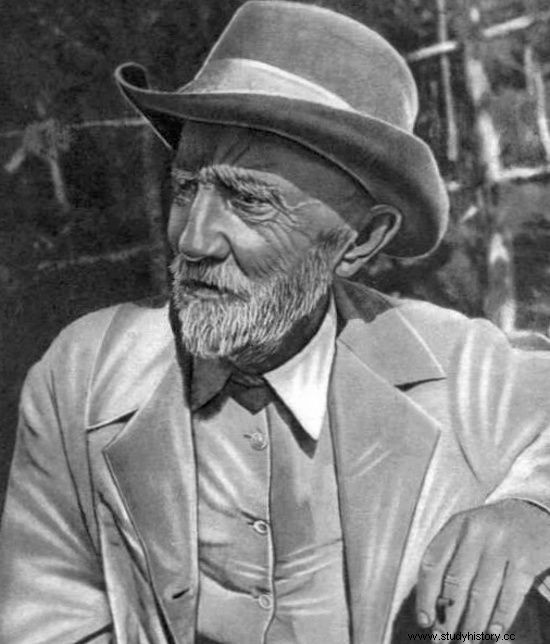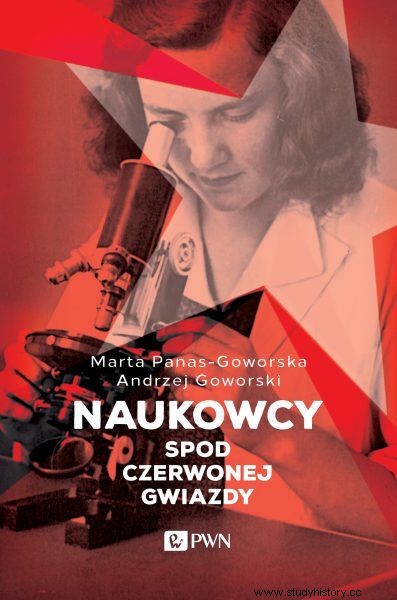Obsessed with the Marxist-Leninist vision of the world. Ruthless and detached from reality. In their "scientific work", truth was placed very low in the hierarchy of priorities. Some of the achievements would be funny ... if they weren't terrible.
Everyone "knows" that Ivan Ivanovich discovered electricity, and Vanya Popovich developed the law of buoyancy years before Archimedes. At least so firmly argued historians in the Soviet Union. But the scientists under the red star on their conscience had not only "minor" changes in history. What else can Soviet science shock us with?
Lepieszynska doctrine
Olga Borisowna Lepieszynska, who started her scientific work during the reign of Nicholas II, was a fierce communist from an early age. In order to adapt the state of knowledge to the needs of the beloved Red Revolution, the "innovator of Soviet science" denied that cells multiply by division and developed her own doctrine. According to it, every creature develops from a living substance that has no structure.

Science was just another field of class struggle and competition with the rotten capitalist West. If so cells multiplied by division, it had to be different in the Land of the Soviets…. (public domain).
Why did this well-educated woman drift away into the depths of absurdity? The answer seems simple:the truth did not fit dialectical materialism. It was an entity that was supposed to shape consciousness. This being (that is, every living organism) could be freely formed.
Dedicated to the cause, Olga decided to give the communist world the "truth" he expected. She based her pathetic research on the observation of egg yolk and egg white . She believed that just as they "arise" a chicken, any creatures can arise from other substances.
Despite the idiocy of her "discoveries", almost no one dared to openly criticize the "genius" professor. Marta and Andrzej Goworski write in the book "Scientists from under the red star":
(...) blackmail and other intimidation attempts were the tools by which the researcher paved the way for pseudoscientific concepts. And the few who dared to stick to their own and boldly proclaim the fiction of a mythical substance ended up on the pavement or imprisoned .
In a laboratory arranged in a private tenement house, the closest relatives of the "scientist" worked and they meticulously wrote elaborations to prove that all living organisms were the result of the transformation of unidentified "unformed living matter".
Gruesome experiments
Wasilew Gerasimowicz Szipacz also developed the thesis on "living substance". He tried to prove the correctness of Lepieszynska's views by conducting gruesome experiments.
Marta and Andrzej Goworski write about it in the book "Scientists from under the red star":
(...) cut open the abdominal cavities of dogs and cats, and then put developing cereal seeds inside . Then he sewed up four-legged patients and left him alone for a week or a month. When the allotted time had passed, he opened their intestines and pulled out what had turned into plants.

To prove his mentor's theory, Szipacz tried to "grow" plants in the stomachs of cats and dogs (left photo:public domain, right photo:Jakub Hałun, CC BY-SA 4.0).
The material he obtained was examined under a microscope. On the basis of observation alone, he concluded that the seed cells had turned into animals and that the mammals had become established with plant elements. He considered it sufficient evidence to support his mentor's thesis.
What exactly was "living substance"? She did not know this, or at least it was never defined by Lepieszynska herself or her students.
War against genetics
Lepieszyn's crazy theory died down after Stalin's death. But not all the "scientific theses" made under the Red Tsar have been forgotten. The star of Soviet science was still Trofim Lysenko, who continued his war against genetics.
Łysenko, like Lepieszynska, believed that species can pupate into other species under the influence of external factors - reptilian-fed birds, for example, can become a whole new kind of animal. Lysenka's works criticized Mendel's theories of inheritance. According to a Soviet "scientist", genes are not responsible for inheritance.

With that gleam in his eyes, Trofim Lysenko looks like a "mad scientist" ... (public domain).
External conditions were to be responsible. In addition, this researcher of dubious quality believed in the theory of self-generation, i.e. the spontaneous formation of new species and their spontaneous transformation into another (for example, pines are former oaks that, for unknown reasons, wanted needles).
In the book "Scientists from under the red star" Marta and Andrzej Goworski quote this fragment from Łysenka's speech:
Michajłowa [agronomist's associate - ed. aut.] she took a head of cabbage and tormented her for five years - in warm winter, in the summer in the field, she did not let it go vernacular [to grow in low temperatures - ed. aut.], it did not let it bloom, in a word - as we say - it completely swung inheritance.
Then chilled. And when it bloomed and gave the seeds, she picked them up, sowed the seedlings and got almost all the forms we have among the brassicas, that is, headed cabbage, cauliflower, Brussels sprouts and turnips.

A simple fruit grower, Ivan Michurin became a great scientist. He was lucky because his inaccurate hypotheses were part of the mainstream of Soviet science ... (public domain).
The "barefooted professor" made his thesis on the basis of the achievements of a simple fruit grower (promoted to scientist at the end of his life), Ivan Michurin. This uneducated peasant tried to negate the recognized principles of inheritance . In a few cases, he managed to create new crosses of plants resistant to the harsh Siberian conditions.
He believed that humans have unlimited possibilities to transform nature. It is hardly surprising that such conclusions appealed to the communist authorities, and the validity of Lysenka's and Michurin's research began to be proclaimed not only in the USSR itself, but also in satellite countries.
We are going to start the solid of the world
The deep conviction in the almost divine (although such a formulation would not come from the pen of any Soviet scientist) human capabilities pushed scientists from the USSR to develop a Soviet project to divert the course of the Siberian Ob and Yenisei rivers .

According to the initiator of the entire project, Mitrofan Dawydov, the otherwise flowing waters of these two rivers could irrigate the areas of Kazakhstan and Central Asia. In addition to major changes in agriculture, fauna and flora, some associated effects would lead to a slowdown in the Earth's rotation around its axis!
A dog with two heads
Vladimir Petrovich Demikhov was one of the students of the Nobel Prize winner Ivan Pavlov. His cruel experiments and scientific theories can be interpreted in two ways. On the one hand, made a great contribution to the development of transplantology on the other hand - overcome with madness like Dr. Frankenstein wade into the depths of sadism and sick abstraction.

Demichov's experiments resembled scenes from a horror movie (source:Bundesarchiv, license:CC BY-SA 3.0 de).
Demikhov was very interested in human physiology, and it was her that he decided to devote his scientific career to. He was mainly involved in examining the heart and circulatory system. The scientist's experiment, the purpose of which was to prove that two creatures can use one circulatory and nervous system, aroused great emotions.
He sewed the head and front feet of the puppy to the body of the German Shepherd . This monstrous "Cerberus" lived for several days. During his career, the scientist created about twenty two-headed dogs. Demichov believed that his work served a good purpose - he wanted to develop methods of transplantation of non-functioning organs in humans.
Bibliography:
- Асратян Эзрас Асратович, Иван Петрович Павлов. Жизнь, творчество, современное состояние учения . М .:Наука, 1981.
- Коптелов Афанасий, Всегда за Лениным , в кн .:Женщины русской революции, М., 1968.
- Krzanowska Halina, Łysenkizm , In: Biological Encyclopedia , Editor-in-chief. Zdzisława Otałęga, Agencja Publicystyczno-Wydawnicza Opres, Krakow 1998.
- Panas-Goworska Marta, Goworski Andrzej, Scientists from under the red star , Polish Scientific Publishers PWN, Warsaw 2016.
- Zubok Vladislav, Failed empire. The Soviet Union of the Cold War period. From Stalin to Gorbachev, trans. Aleksandra Czwojdrak, Jagiellonian University Press, Krakow 2010.
